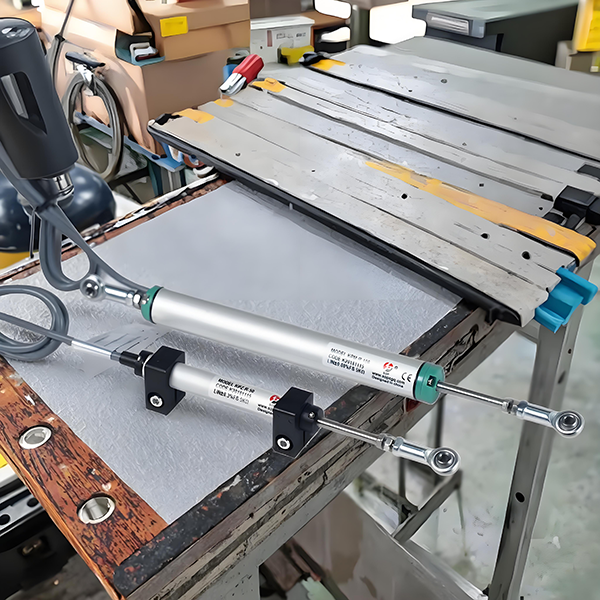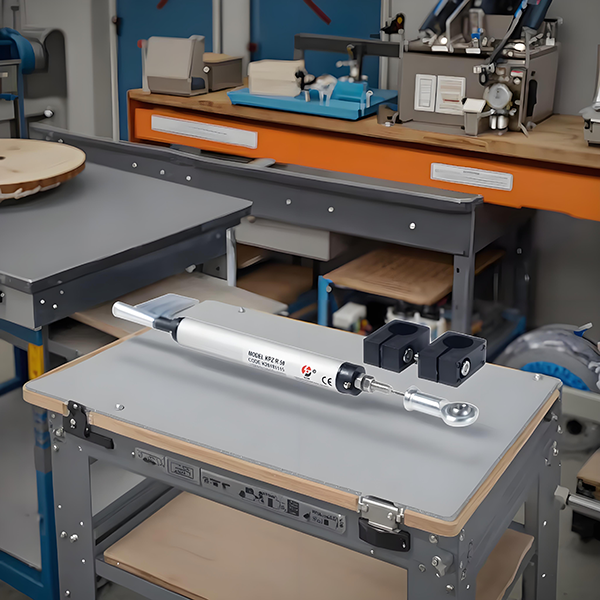Dalam pengukuran posisi, jarak, atau perpindahan, transduser linier memainkan peran penting dalam berbagai industri, mulai dari manufaktur hingga robotika. Jika Anda pernah bertanya-tanya bagaimana perangkat ini bekerja, Anda berada di tempat yang tepat! Mari selami dasar-dasar transduser linier dan jelaskan cara kerjanya dalam istilah yang sederhana dan mudah dipahami.
Apa itu Transducer Linear?
Di intinya, sebuah transducer linear adalah perangkat yang mengubah gerakan linier (gerakan maju-mundur) menjadi sinyal listrik. Sinyal ini kemudian dapat digunakan oleh berbagai sistem untuk membuat keputusan atau menampilkan informasi. Anda dapat menemukan transduser ini pada aplikasi yang bervariasi, mulai dari lini perakitan otomatis hingga sistem rumah pintar, di mana mengetahui posisi yang tepat sangat penting.
Prinsip dasar
Jadi, bagaimana cara kerjanya secara tepat? Rahasianya terletak pada proses konversi dari pergerakan fisik menjadi sinyal listrik. Pada dasarnya, transduser linier beroperasi berdasarkan dua prinsip utama: pengukuran potensiometrik dan induktif.
Transduser Potensiometrik: Bayangkan potensiometer geser sederhana, seperti tombol volume pada stereo Anda. Saat Anda memutar tombol tersebut, sebuah slider bergerak sepanjang jalur resistif, mengubah hambatan dan menghasilkan tegangan yang sesuai dengan posisi tombol. Dengan cara yang sama, transduser linier potensiometrik memiliki elemen yang bergerak dalam garis lurus. Saat elemen bergerak, tegangan keluaran berubah, yang dapat diukur dan ditafsirkan sebagai posisi tertentu.
Transduser Induktif: Transduser linier induktif bekerja berdasarkan prinsip induksi elektromagnetik. Mereka menggunakan kumparan dan medan magnet untuk mendeteksi pergerakan. Saat posisi objek magnetik berubah relatif terhadap kumparan, induktansi berubah, yang menghasilkan sinyal sebanding dengan perpindahannya. Metode ini cenderung sangat kokoh dan sering digunakan di lingkungan yang keras.
Jenis-Jenis Transduser Linier
Ada beberapa jenis berbeda dari transduser linier tersedia, dan masing-masing memiliki keunggulan unik tersendiri. Beberapa jenis umum meliputi:
Potensiometer Linear: Ini sederhana dan hemat biaya. Sering digunakan dalam aplikasi di mana ketepatan tidak terlalu kritis.
LVDT (Linear Variable Differential Transformers): Ini dikenal karena akurasi dan keandalannya yang tinggi. Cara kerjanya dengan menghasilkan tegangan keluaran yang bervariasi berdasarkan posisi inti di dalam transformator.
Sensor Magnetostrictive: Sensor ini memanfaatkan magnet dan kawat khusus untuk menentukan posisi. Sensor ini sangat akurat dan dapat ditemukan pada aplikasi seperti silinder hidrolik.
Aplikasi Transduser Linear
Anda mungkin bertanya-tanya di mana Anda akan menemukan alat ini transduser linier dalam kondisi beroperasi. Alat ini ada di mana-mana! Di industri otomotif, alat ini membantu memantau posisi katup throttle. Dalam otomasi industri, alat ini sangat penting untuk mendeteksi posisi conveyor atau lengan robot. Bahkan dalam bidang kesehatan, alat ini dapat digunakan pada perangkat yang memantau posisi pasien.
Mengapa Mereka Penting?
Memahami bagaimana transduser linier pekerjaan adalah kunci karena mereka juga membawa ketepatan dan efisiensi ke berbagai sistem. Dengan memberikan umpan balik posisi secara real-time, mereka membantu mesin beroperasi secara mulus dan mencegah kesalahan. Bayangkan lengan robot yang dapat memilih dan menempatkan barang secara akurat; ketepatan tersebut sering kali merupakan hasil dari fungsi transduser linier yang efektif.

Singkatnya, transduser linier adalah alat yang sangat baik untuk mengubah gerakan linier menjadi sinyal listrik, memungkinkan pengukuran yang presisi dalam berbagai macam aplikasi. Baik menggunakan prinsip potensiometrik maupun induktif, perangkat-perangkat ini meningkatkan efisiensi dan akurasi sistem yang dilayani. Jadi, lain kali Anda melihat mesin bergerak dengan akurasi tinggi, Anda mungkin ingin mengapresiasi transduser linier kecil yang cerdas yang membuat semuanya terjadi!

